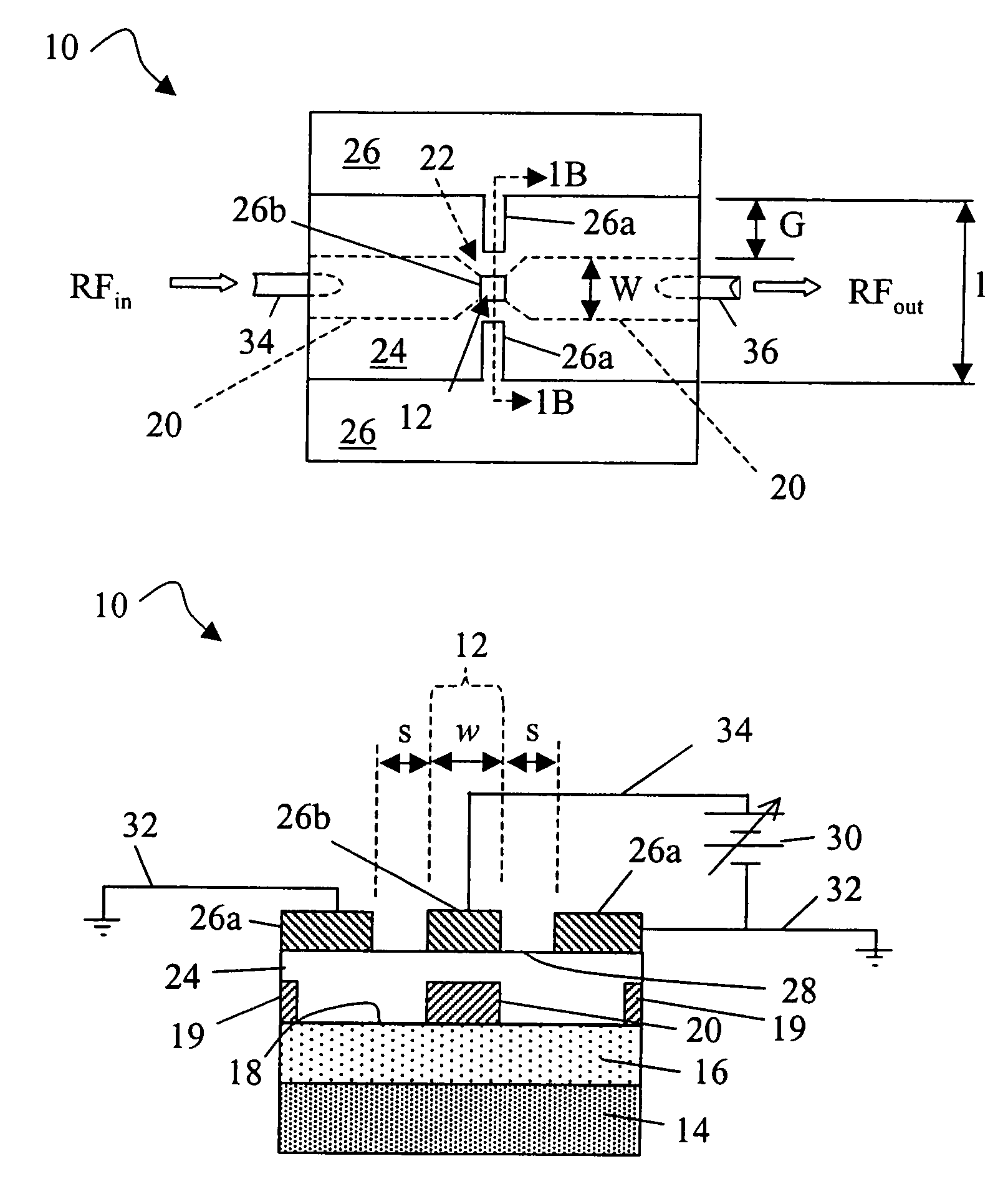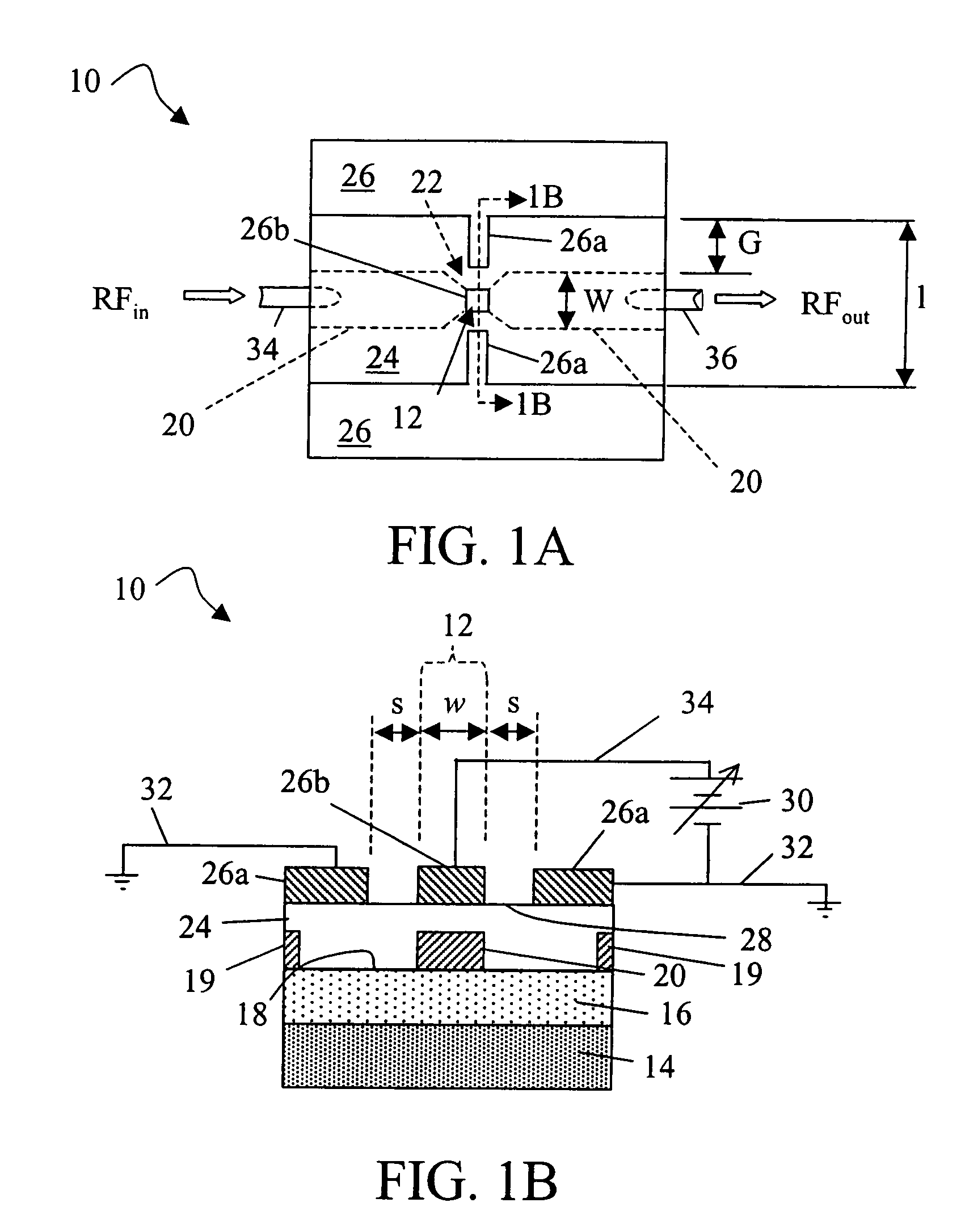Tuneable electromagnetic bandgap structures based on high resistivity silicon substrates
- Summary
- Abstract
- Description
- Claims
- Application Information
AI Technical Summary
Benefits of technology
Problems solved by technology
Method used
Image
Examples
Embodiment Construction
[0022]The present invention describes ferroelectric tunable electromagnetic band (“TEBG”) structures useful for periodically loading coplanar waveguides (“CPWs”). High dielectric permittivity of the ferroelectrics used in the present invention enables reduction of the wavelength in the line and hence the period of the TEBG structures. This helps to reduce the size of the TEBG structures according to the present invention by at least a factor of 2 or more, which pushes the application of TEBG structures to lower range of microwave frequencies, and facilitates the integration of TEBG structures into semiconductor substrates at millimeter / sub-millimeter waves.
[0023]Additionally, the TEBG structures according to the present invention may be operated in an environment having a temperature range of between about 77K to about 330K. Furthermore, the TEBG structures according to the present invention can handle up to 3 megavolts per centimeter, or in one embodiment, which provides a 40 μm ga...
PUM
 Login to View More
Login to View More Abstract
Description
Claims
Application Information
 Login to View More
Login to View More - R&D
- Intellectual Property
- Life Sciences
- Materials
- Tech Scout
- Unparalleled Data Quality
- Higher Quality Content
- 60% Fewer Hallucinations
Browse by: Latest US Patents, China's latest patents, Technical Efficacy Thesaurus, Application Domain, Technology Topic, Popular Technical Reports.
© 2025 PatSnap. All rights reserved.Legal|Privacy policy|Modern Slavery Act Transparency Statement|Sitemap|About US| Contact US: help@patsnap.com



